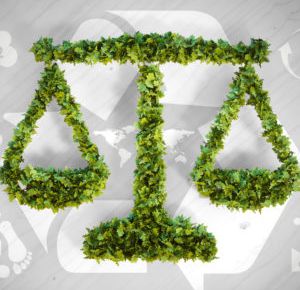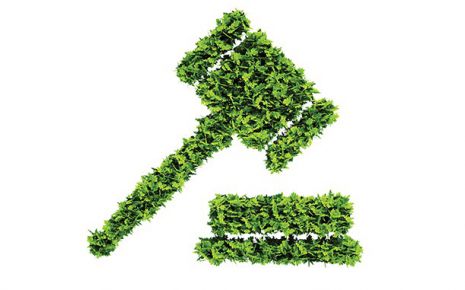Aims and Objectives of the Consumer Protection Act, 1986
It was with the emergence of the laissez-faire economy that the thought
of consumer is king was widely followed and accepted. The twentieth century was
marked by the advent of consumerism where there have been frequent trade wars
and conflicts between markets shareholders with constant ought to be higher than
the rest. This resulted in stiff competition with the traders resorting to
unfair trade practices and manipulating the customers and took advantage of the
lack of information of the purchasers.
The leading case of Donoghue v. Stevenson [1] is taken into account to be the landmark judgement for laws regarding product liability where the manufacturer was accountable to the court for the presence of snail in the ginger beer bottle. This is the hallmark in the case regarding consumer protection and called for the need for legislation to take care of the customers and protect their interests.
The Consumer Protection Act was passed in 1986 and it came into force on 1st July 1987. The main objectives of the act are to provide better and one spherical protection to customers and effective safeguard against different types of exploitation like defective merchandise, deficient services and unfair trade practices. It conjointly makes provisions for simple, speedy and cheap machinery for redressal of consumer's grievances.
With the speedy growth in trade and commerce, the traders had an unfair favourable position over the customers and this was an instantaneous consequence of industrialization. The consumer had very little or no information regarding the rights available to them and thus were pushed to a disadvantage. But, it had been solely in 1986 that the law markers of the nation decided to structure and contour the efforts created towards protecting consumers' interest and stressed the necessity of welfare legislation in the form of the Consumer Protection Act, 1986.
Aims and Objectives of the Act:
Consumer Protection Act 1986, enacted as an outcome of the widespread consumer protection movement. On the foundation of the report of the Secretary-General on Consumer Protection dated 27th May 1983, the United Nations Economic and Social Council recommended that the world governments should build up, reinforce and implement a coherent consumer protection policy taking into consideration the guidelines which were set.
The governments were to further provide sufficient infrastructural including the bodies as well as financial facilities to develop, implement and monitor consumer protection policies. The introduction of new products in the developing countries was to be asserted in relation to the local conditions having regard to the existing production distribution and consumption pattern of the country or region concerned.
With reference to the consumer movement and the international obligations for the protection of rights of the consumer, provisions have been made in the said Act with the object of interpreting the relevant law in a rational manner and for achieving the objective set forth in the act or rational approach and not to technical approach is the mandate of law.
According to the preamble of the Act, the Act was enacted, to provide protection of the interest of consumers. The use of the word 'protection' furnishes the key to the minds of the makers of the act [3]. Various definitions and provisions which elaborately tend to achieve this objective have to be construed in this light without departing from the settled review that a preamble cannot control the otherwise plain meaning of a provision.
The act meets the long-felt necessity of protecting the common man from such wrong for which remedy under ordinary law for various reasons has become illusory. The importance of the act lies in promoting the welfare of society by enabling the customer to participate directly in the market economy. It attempts to remove the helplessness of the consumer which he faces against powerful business described as a network of rackets or a society in which producers have secured power, to 'rob the rest of the public bodies.
The legislature has been taken precautions not only to define complaint, complainant and consumer but even to mention in detail what would amount to unfair trade practices by giving an elaborate definition in the clause (r) and even to define defect and deficiency by clauses (f) and (g) for which consumer can approach the Commission [4].
The Act thus aims to protect the economic interest of the consumer as understood in a commercial sense as a purchaser of good and in the larger sense of services [5]. It is a milestone in the history of socio-economic legislation and directed towards achieving public benefit. The act has to be constructed in favour of the consumer to achieve the purpose of the enactment as it is social benefit oriented legislation.
Subject to that, it should not do violence to the language of the provision and should not be contrary to the attempted objective of the enactment [6].
For the settlement of consumer disputes and other connected matters, the Act has made provisions for the establishment of consumer councils. At the district, state and central level quasi-judicial machinery has been set up which will observe the principles of natural justice and provide speedy and simple redressal to consumer disputes.
Every customer has certain rights and responsibility which this Act seeks to protect. For example, every consumer has the right to informed to be informed about the quality, quantity, potency, purity standards and rise of goods, the right to be protected against marketing of goods that are hazardous to life and property, right to access to a variety of goods at a competitive price, right to consumer education, right to be heard and to be assured that consumers interest will receive due consideration at appropriate forum and finally the right to seek redressal against unfair trade practices and unscrupulous exploitations of consumers.
The Supreme Court has held that the purpose of the Consumer Protection Act is the better protection of interests of consumers and to make provisions for the settlement of consumer council and other authority for the settlement of consumer disputes and matter connected therewith.
The objects of the act are given in section 6 which makes it the responsibility of the Centre Consumer Protection Council for achieving those objects
Conclusion:
Lack of customer awareness and the existence of them as an unorganized sector the problems that continue to pestilence the capitalistic economy. It gives the traders an unjust advantage over the consumer who is subjected to market risks. This often leads to widespread exploitation of the consumers and this is where COPRA as legislation becomes crucial.
In order to protect the long term interests of businessman and also to keep Government intervention at a minimum, it is important for the Government to raise their quality of goods and services and provide a substantial standard of goods and services to the consumer.
The Consumer Protection Act, 1986 is just legislation that tries to make sure of these aspects relating to the promotion of interests of consumers. Even though there were multiple legislations, it was only after the establishment of the Consumer Protection Act, 1986 that the consumer's rights were structured properly in India. Consumer education and the protection of their interest form the essence of the objective of this legislation. In order to bring this, accessibility should be improved by a lot more participation in rural areas.
This is where the role played by the Voluntary Consumer Organisation becomes very important. People who are often uninformed of the complexities of such proceedings can always approach the organisation to carry their interest forward. There are a lot of questions that are yet to be answered when it comes to consumer protection and the role played by both the consumers and the Government. We, as consumers do have added responsibility to be aware about our rights and make sure we are not subjected to any unfair trade practices.
Reference:
The leading case of Donoghue v. Stevenson [1] is taken into account to be the landmark judgement for laws regarding product liability where the manufacturer was accountable to the court for the presence of snail in the ginger beer bottle. This is the hallmark in the case regarding consumer protection and called for the need for legislation to take care of the customers and protect their interests.
The Consumer Protection Act was passed in 1986 and it came into force on 1st July 1987. The main objectives of the act are to provide better and one spherical protection to customers and effective safeguard against different types of exploitation like defective merchandise, deficient services and unfair trade practices. It conjointly makes provisions for simple, speedy and cheap machinery for redressal of consumer's grievances.
With the speedy growth in trade and commerce, the traders had an unfair favourable position over the customers and this was an instantaneous consequence of industrialization. The consumer had very little or no information regarding the rights available to them and thus were pushed to a disadvantage. But, it had been solely in 1986 that the law markers of the nation decided to structure and contour the efforts created towards protecting consumers' interest and stressed the necessity of welfare legislation in the form of the Consumer Protection Act, 1986.
The salient features of the Consumers Protection Act, 1986 are [2]:
- It applies to all goods, services and unfair trade practice unless specifically exempted by the Central Government.
- It covers all sectors- private, public or co-operative.
- It provides for the establishment of consumer protection councils at the central, state and district levels to promote and protect the rights of consumers and a three-tier quasi consumer's grievances and disputes.
- It provides statutory recognition to the six rights of consumers.
Aims and Objectives of the Act:
Consumer Protection Act 1986, enacted as an outcome of the widespread consumer protection movement. On the foundation of the report of the Secretary-General on Consumer Protection dated 27th May 1983, the United Nations Economic and Social Council recommended that the world governments should build up, reinforce and implement a coherent consumer protection policy taking into consideration the guidelines which were set.
The governments were to further provide sufficient infrastructural including the bodies as well as financial facilities to develop, implement and monitor consumer protection policies. The introduction of new products in the developing countries was to be asserted in relation to the local conditions having regard to the existing production distribution and consumption pattern of the country or region concerned.
With reference to the consumer movement and the international obligations for the protection of rights of the consumer, provisions have been made in the said Act with the object of interpreting the relevant law in a rational manner and for achieving the objective set forth in the act or rational approach and not to technical approach is the mandate of law.
According to the preamble of the Act, the Act was enacted, to provide protection of the interest of consumers. The use of the word 'protection' furnishes the key to the minds of the makers of the act [3]. Various definitions and provisions which elaborately tend to achieve this objective have to be construed in this light without departing from the settled review that a preamble cannot control the otherwise plain meaning of a provision.
The act meets the long-felt necessity of protecting the common man from such wrong for which remedy under ordinary law for various reasons has become illusory. The importance of the act lies in promoting the welfare of society by enabling the customer to participate directly in the market economy. It attempts to remove the helplessness of the consumer which he faces against powerful business described as a network of rackets or a society in which producers have secured power, to 'rob the rest of the public bodies.
The legislature has been taken precautions not only to define complaint, complainant and consumer but even to mention in detail what would amount to unfair trade practices by giving an elaborate definition in the clause (r) and even to define defect and deficiency by clauses (f) and (g) for which consumer can approach the Commission [4].
The Act thus aims to protect the economic interest of the consumer as understood in a commercial sense as a purchaser of good and in the larger sense of services [5]. It is a milestone in the history of socio-economic legislation and directed towards achieving public benefit. The act has to be constructed in favour of the consumer to achieve the purpose of the enactment as it is social benefit oriented legislation.
Subject to that, it should not do violence to the language of the provision and should not be contrary to the attempted objective of the enactment [6].
For the settlement of consumer disputes and other connected matters, the Act has made provisions for the establishment of consumer councils. At the district, state and central level quasi-judicial machinery has been set up which will observe the principles of natural justice and provide speedy and simple redressal to consumer disputes.
Every customer has certain rights and responsibility which this Act seeks to protect. For example, every consumer has the right to informed to be informed about the quality, quantity, potency, purity standards and rise of goods, the right to be protected against marketing of goods that are hazardous to life and property, right to access to a variety of goods at a competitive price, right to consumer education, right to be heard and to be assured that consumers interest will receive due consideration at appropriate forum and finally the right to seek redressal against unfair trade practices and unscrupulous exploitations of consumers.
The Supreme Court has held that the purpose of the Consumer Protection Act is the better protection of interests of consumers and to make provisions for the settlement of consumer council and other authority for the settlement of consumer disputes and matter connected therewith.
The objects of the act are given in section 6 which makes it the responsibility of the Centre Consumer Protection Council for achieving those objects
Section 6 says that
The objects of the Centre Council shall be to promote and protect the right of the consumers such as: [7]- The right to be protected against the marketing of goods [and services] which are hazardous to life and property;
- The right to be informed about the quality quantity potency, purity in standard and price of goods[or service as the case may be] so as to protect the consumer against unfair trade practices;
- The right to be assured wherever possible access to a variety of goods and services are at a competitive price;
- The right to be heard and to be assured that the consumer's interest bill received new consideration at appropriate forums;
- The right to seek redress and against unfair trade practices[or restrictive trade practices] or unscrupulous exploitation of consumers; and
- The right to consumer education.
- Right to Protection against Hazardous Goods:
The Act gives every customer the right to be protected against hazardous goods and service which are dangerous to life and property. Hazardous goods include for example adulterated foods, narcotic drugs; weak cement etc all these being dangerous to life as well as property. Even though government authority has several law at their disposal for the prevention of marketing of hazardous goods and services yet any consumer who has been injured either in his person or property may come for protection and he will have a speedy and effective remedy for redressal.
The Law of Torts generally deals with the subject matter of dangerous goods. The leading case relating to dangerous goods is that of Donoghue v. Stevenson in which it was held that a producer sending goods into the market would be liable to the ultimate consumer if his person or property is injured by the normal use of the goods.
In this celebrated case a manufacturer who sold a substandard article to a retailer who sold it to a consumer was held liable to a friend of the consumer who after consuming it became ill, in fact, her illness was aggravated when remains of a dead snail which sprang from a bottle of drink her had already taken. This landmark decision expanded the category of a person's liability. From the producer to the ultimate consumer every person in the chain has been made liable.
In another leading case of Grant v. Australian Knitting Mills [8] liability was attached to the weavers of trousers which contain some chemical because of which the person who wore those trousers had the problem of dermatitis (skin disease).
In the words of Winfield:
The principle has been extended from articles of food and drinks and includes inter alia kiosks [9], tombstone, hair dye [10], industrial chemicals [11], lifts, motor-cars and parts, toys and scented erasers. Likewise, the term 'consumer' includes the ultimate user of the article or anyone who is within the physical proximity of it.
To all cases, whether it includes injuries to a child by a falling tombstone [12] or delivery of defected cars [13] or liability to a person who was stranded in a lift [14], this principle applies.
- Right to information:
Every consumer has the right to be informed about the quality, quantity, potency, purity, standard and price of goods or service, as the case may be, he buys or avails of. Right of information has been given to the customers to protect them from unfair trade practices. The term unfair trade practice has been described in Section 2 (1) (r).
Unfair trade practices include a false representation that goods or services are of particular standard, quality, grade etc.; any false warranty or guarantee of performance of the goods or services; publication of advertisement for sale or supply of goods or service at a bargain price that is not intended to be offered for sale or supply at the bargain price; offering of gifts, prizes or other items with the intention of not providing them as offered or creating an impression that something is being offered free of charge when it is not so in reality.
The case of Consumer Protection Council v. National Dairy Development Board [15] can be usefully cited here. In this case, the complainant wanted to know that how the dairy board was using the imported palmolein oil but the Board was not furnishing the requisite information because according to it the figures were privileged from disclosure in the public interest. It was held that the complainant had the right to information.
In India photographic Co v. HD Shourie [16], an importer of films was not able to print prices on films because the nature of his trade did not permit him to open packages. Therefore, he was directed to make a condition of attaching price tags to each item before selling them to his retailers. Similarly, when Rs.88/- was charged for an article which showed the price Rs.75 inclusive of taxes the buyer was given compensation for Rs.500/- [17].
In cases of unfair trade practices, the consumer may apply either the Monopolies Commission under the MRTP act or to the Forum constituted under the Consumer Protection Act, 1986.
- Right of Access to Variety of Goods and Services at Competitive
Prices:
Every consumer has a right to access variety of goods and services at competitive prices. This can be done only when there is an organization of market and fixation of market prices in such a way that all dealers are supplied with variety of goods for benefit of the consumer and the goods are being offered at competitive prices.
This responsibility of bringing organization of market and market prices has been cast upon the Central Consumer Protection Council by the Act. Certain liberty has been given to the shopkeepers in respect of marketing so that goods and services of variety may become available at competitive prices.
When a matter is brought to the notice of the Monopolies Commission that a shopkeeper is insisting upon his customers to buy goods of one sort only, leaving them with no choice, the Commission will inquire into whether the shopkeeper is tied up by a producer so that it can liberate him to have his choice as to stock-in-trade. This power has now also been given to the Central Consumer Protection Council by s. 6(c).
- Right to be Heard and Receive Due Consideration at Appropriate
Forums:
Every customer has the right to be heard and received due consideration at appropriate forums. The Central Consumer Protection Council has been charged with the responsibility of ensuring that each customer dispute and disagreement is heard properly and of assuring that consumer's interest will receive due consideration at appropriate forums.
- Right against Unfair or Restrictive Trade Practices, Unscrupulous
Exploitation:
Every customer has the right to seek redressal against unfair trade practices or restrictive trade practices or unscrupulous exploitation. This responsibility has also been given to the Central Consumer Protection Council.
When goods are marketed with ISI mark but in reality they do not correspond with the requisite standard [18], where the money for the purchase of a car is deposited in advance but no car is given within the prescribed time, where the lawn is booked for marriage on non-refundable deposit but on the rescheduling of the marriage date the lawn is not made available for marriage when in fact it was free that day [19], selling old renovated goods as knew, selling oil which can cure baldness or medicines or which can cure leucoderma when in fact they are not capable of curing these problems, are all included in unfair trade practices.
- Right to Consumer Education:
Every consumer has a right to education which means that every consumer must be made aware of his rights as well as his legal remedies. As VM Shukla has observed in the preface of his book Legal Remedies [20] that where people do not exercise their legal remedies, the system of remedies tends to become rusted. People should have knowledge of their rights and the availability of legal remedies when such rights are curtailed.
By section 6(f) the Central Consumer Protection Council has been charged with the responsibility of providing proper education to the people in terms of their remedies under the Consumer Protection Act. Every individual is a consumer. When all of them are made aware of their rights, they may help themselves against exploitation by manufactures and traders.
Conclusion:
Lack of customer awareness and the existence of them as an unorganized sector the problems that continue to pestilence the capitalistic economy. It gives the traders an unjust advantage over the consumer who is subjected to market risks. This often leads to widespread exploitation of the consumers and this is where COPRA as legislation becomes crucial.
In order to protect the long term interests of businessman and also to keep Government intervention at a minimum, it is important for the Government to raise their quality of goods and services and provide a substantial standard of goods and services to the consumer.
The Consumer Protection Act, 1986 is just legislation that tries to make sure of these aspects relating to the promotion of interests of consumers. Even though there were multiple legislations, it was only after the establishment of the Consumer Protection Act, 1986 that the consumer's rights were structured properly in India. Consumer education and the protection of their interest form the essence of the objective of this legislation. In order to bring this, accessibility should be improved by a lot more participation in rural areas.
This is where the role played by the Voluntary Consumer Organisation becomes very important. People who are often uninformed of the complexities of such proceedings can always approach the organisation to carry their interest forward. There are a lot of questions that are yet to be answered when it comes to consumer protection and the role played by both the consumers and the Government. We, as consumers do have added responsibility to be aware about our rights and make sure we are not subjected to any unfair trade practices.
Reference:
- 1932 SC (HL) 31
- Introduction to the Law of Torts and Consumer Protection 3th edn (Avtar Singh, Harpreet Kaur)
- https://1library.net/subject/consumer-bill-of-rights
- The Consumer Protection Act, 1986
- Bunga Daniel Babu v. M/S Sri Vasudeva Constructions
- Lucknow Development Authority v. MK Gupta, AIR 1994 SC 787
- The Consumer Protection Act, 1986
- AIR 1936 PC 34
- Paine v Colne Valley Electric Supply Co. [1938] 4 All ER 803.
- Watson v Buckley, [1940] 1 All ER 174
- Vacwell & Eng Co. Ltd. BDh Chemical Ltd. [1971] 1 QB 88
- Brown v Cotterstill, [1934] 51 TLR 21
- Andrew v Hopkinson, [1957] 1 QB 229
- Haseldine v Daw, [1941] 2 KB 343
- (1991) 11 CPJ 617 Guj
- (1991) 11 CPJ 142 Delhi Commission.
- Standard Automobile v. Syed Ashrat, (1991) 11 CPJ 626 Ker.
- National Consumer Protection Samiti v. Chief Electrical Supervisor, 1991 CPR 191 Guj.
- Angela Fonesca v. Coral Lawns, (1991)11 CPJ 670
- V.M Shukla, Edited by Dr. Avtar Singh, Legal Remedies, 5th edn., Eastern Book Co., (1986).
Law Article in India
Legal Question & Answers
Lawyers in India - Search By City
LawArticles
How To File For Mutual Divorce In Delhi

How To File For Mutual Divorce In Delhi Mutual Consent Divorce is the Simplest Way to Obtain a D...
Increased Age For Girls Marriage

It is hoped that the Prohibition of Child Marriage (Amendment) Bill, 2021, which intends to inc...
Facade of Social Media

One may very easily get absorbed in the lives of others as one scrolls through a Facebook news ...
Section 482 CrPc - Quashing Of FIR: Guid...

The Inherent power under Section 482 in The Code Of Criminal Procedure, 1973 (37th Chapter of t...
The Uniform Civil Code (UCC) in India: A...

The Uniform Civil Code (UCC) is a concept that proposes the unification of personal laws across...
Role Of Artificial Intelligence In Legal...

Artificial intelligence (AI) is revolutionizing various sectors of the economy, and the legal i...








Please Drop Your Comments